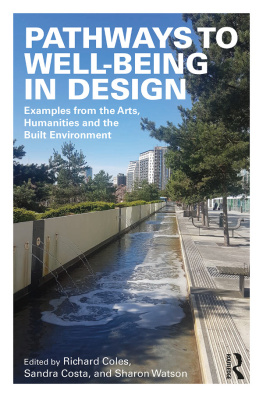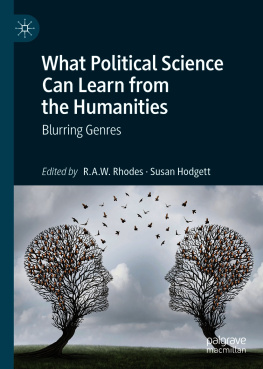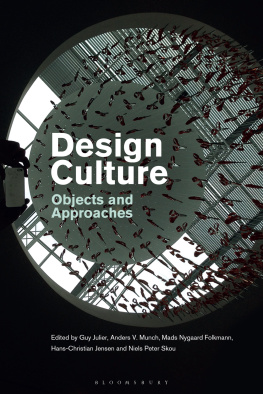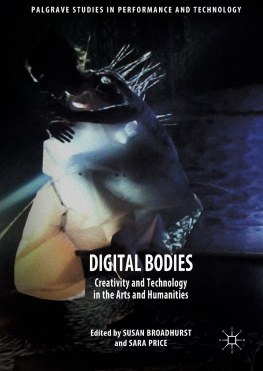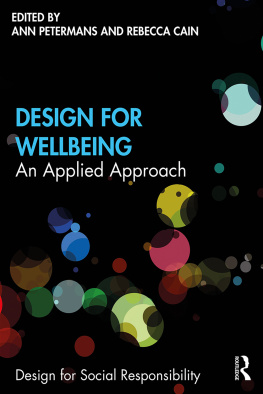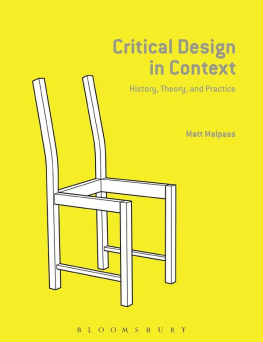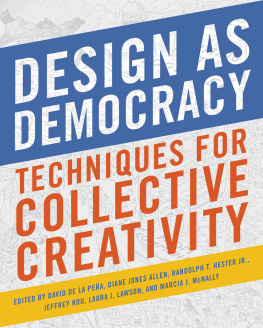
PATHWAYS TO WELL-BEING IN DESIGN
How can we achieve and promote well-being? Drawing on examples from the arts, humanities and design, this book brings together work from a wide range of areas to reveal the unique ways in which different disciplines approach the universal goal of supporting well-being.
Pathways to Well-Being in Design recognises that the distinction between academics and practitioners often becomes blurred, where, when working together, a fusion of thoughts and ideas takes place and provides a powerful platform for dialogue.
Providing new insights into the approaches and issues associated with promoting well-being, the books multidisciplinary coverage invites readers to consider these ideas within the framework of their own work.
The books 12 chapters are authored by academics who are involved in practice or are working with practitioners and features real world case studies which cover a range of situations, circumstances, environments and social groups.
Pathways to Well-Being in Design responds to those wishing to enquire further about well-being, taking the reader through different circumstances to consider approaches, discussing practice and theory, real world and virtual world considerations.
This book is essential reading for anyone seeking to understand well-being, including students and professionals in architecture, landscape architecture, urban planning, design and health sciences.
Richard Coles is Emeritus Professor of Landscape in the Birmingham School of Architecture and Design, based in the Faculty of the Arts, Design and Media, Birmingham City University, UK. His research involves understanding the nature of environmental interaction and the development of environments that are supportive of the needs of users.
Sandra Costa is a Researcher and Lecturer in Landscape Architecture at the Birmingham School of Architecture and Design, Birmingham City University, UK. Her research examines the nature of personplace interactions, exploring the choreographies of the experience and how individuals negotiate well-being. She received her PhD from Birmingham City University researching immersive walking techniques involving self-narrated walking.
Sharon Watson is a Landscape Architect focusing on aspects of community engagement and research involving children. She has extensive experience of working with schools and the educational sector, where she has developed sophisticated child-centric methodologies involving the use of digital media. Her current research involves working with children in investigating their responses to the natural world and the different agencies offered by current technology, focusing on the wild places that exist in urban situations. She holds a PhD from Birmingham City University, UK.
PATHWAYS TO WELL
BEING IN DESIGN
Examples from the Arts, Humanities
and the Built Environment
Edited by Richard Coles, Sandra Costa
and Sharon Watson

First edition published 2019
by Routledge
2 Park Square, Milton Park, Abingdon, Oxon, OX14 4RN
and by Routledge
711 Third Avenue, New York, NY 10017
Routledge is an imprint of the Taylor & Francis Group, an informa business
2019 selection and editorial matter, Richard Coles, Sandra Costa and Sharon Watson; individual chapters, the contributors
The right of Richard Coles, Sandra Costa and Sharon Watson to be identified as the authors of the editorial material, and of the authors for their individual chapters, has been asserted in accordance with sections 77 and 78 of the Copyright, Designs and Patents Act 1988.
All rights reserved. No part of this book may be reprinted or reproduced or utilised in any form or by any electronic, mechanical, or other means, now known or hereafter invented, including photocopying and recording, or in any information storage or retrieval system, without permission in writing from the publishers.
Trademark notice : Product or corporate names may be trademarks or registered trademarks, and are used only for identification and explanation without intent to infringe.
British Library Cataloguing-in-Publication Data
A catalogue record for this book is available from the British Library
Library of Congress Cataloging-in-Publication Data
Names: Coles, Richard, 1949- editor.
Title: Pathways to well-being in design : examples from the arts, humanities and the built environment / edited by Richard Coles, Sandra Costa and Sharon Watson.
Description: First edition. | New York : Routledge, 2019. | Includes bibliographical references and index.
Identifiers: LCCN 2018027452| ISBN 9780815346944 (hb : alk. paper) | ISBN 9780815346951 (pb : alk. paper) | ISBN 9781351170048 (ebook)
Subjects: LCSH: DesignHuman factors. | Well-being.
Classification: LCC NK1520 .P38 2019 | DDC 745.4dc23
LC record available at https://lccn.loc.gov/2018027452
ISBN: 978-0-815-34694-4 (hbk)
ISBN: 978-0-815-34695-1 (pbk)
ISBN: 978-1-351-17004-8 (ebk)
Typeset in Bembo
by Swales & Willis Ltd, Exeter, Devon, UK
Cover image: Eastside City Park, Birmingham, UK Sandra Costa
Saamah Abdallah is a Freelance Well-Being Expert who previously worked as a Senior Researcher at the Centre for Well-being at the New Economics Foundation. He is currently focusing on well-being in local policy and in the workplace.
Darren Awang works in the Faculty of Health and Life Sciences at Coventry University. He is an Occupational Therapist teaching and undertaking research in SMART homes, assistive technology and Service Design.
Veronica Barry has over 20 years experience in urban agriculture, community gardening and local food schemes focusing on public health, community planning, regularly speaking at conferences and public events. She is currently researching the role of food and food growing within healthy planning at the School of the Built Environment, Birmingham City University, UK.
Chris Blythe is the Director of the Federation of City Farms and Community Gardens (FCFCG), recently leading the successful merger with Care Farming UK to create a new organisation with communities and green care at its heart. Before joining FCFCG, Chris was Operations Leader for the Conservation Volunteers in Birmingham and the West Midlands managing the Health for Life in the Community Programme.
Elizabeth Freeman Calabrese is a Licensed Architect, Global Affiliate for the Gund Institute for Environment at the University of Vermont and is a leading educator of Biophilic Design. She encourages the holistic integration of natural systems and processes into the design process to promote both human and environmental health and well-being.
Richard Coles is Emeritus Professor of Landscape in the Birmingham School of Architecture and Design, based in the Faculty of the Arts, Design and Media, Birmingham City University, UK. His research involves understanding the nature of environmental interaction and the development of environments that are supportive of the needs of users.
Sandra Costa (PhD) is a Landscape Architect currently lecturing at the Birmingham School of Architecture and Design, Birmingham City University, UK. Her research involves user-based perceptions of the environment, examining the choreographies of interaction and innovative methodologies involving narratives and immersive walking.
Haydn Davies is Professor of Law and Head of the School of Law at Birmingham City University, currently Vice Chair of the UK Environmental Law Association and a former Co-Convenor of the Welsh Working Party. His research encompasses environmental justice, human rights, environmental protection and climate change law.
Next page
